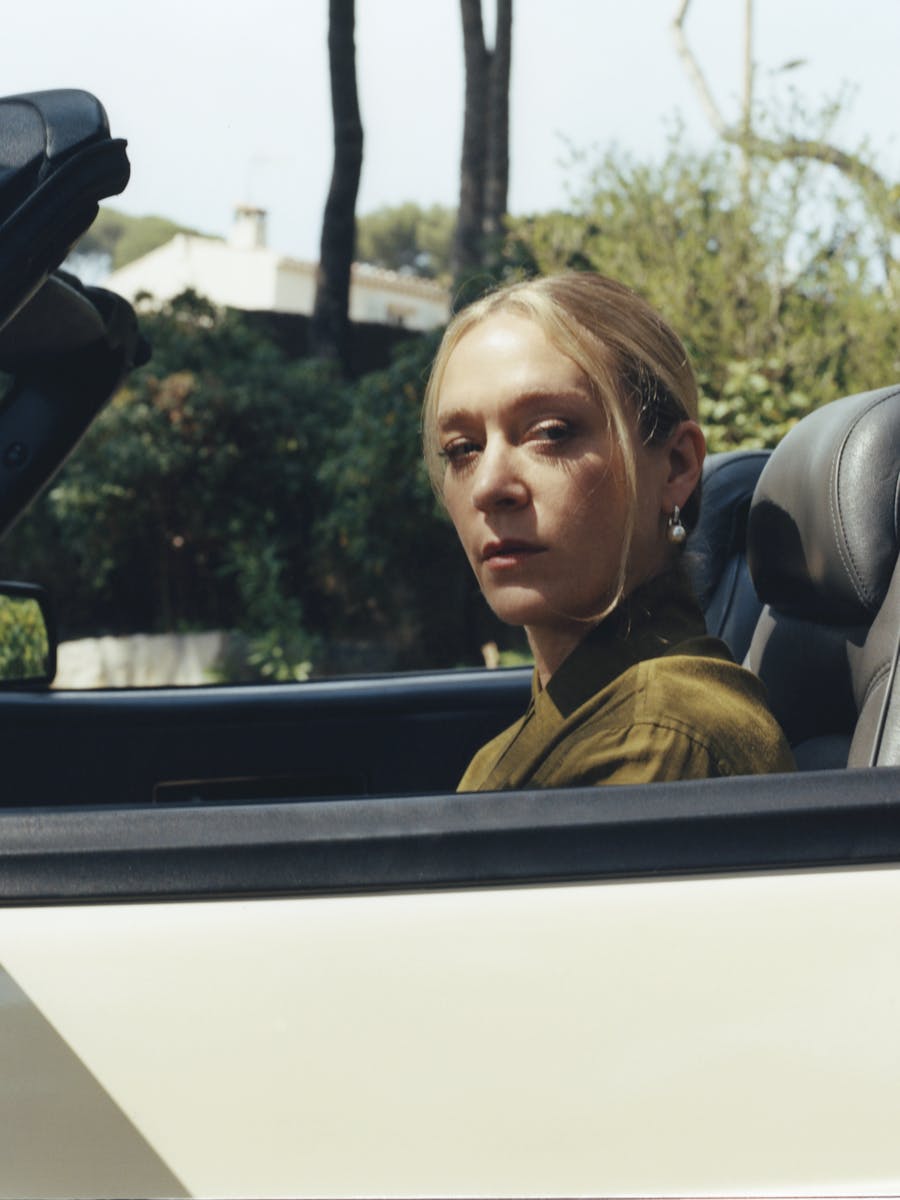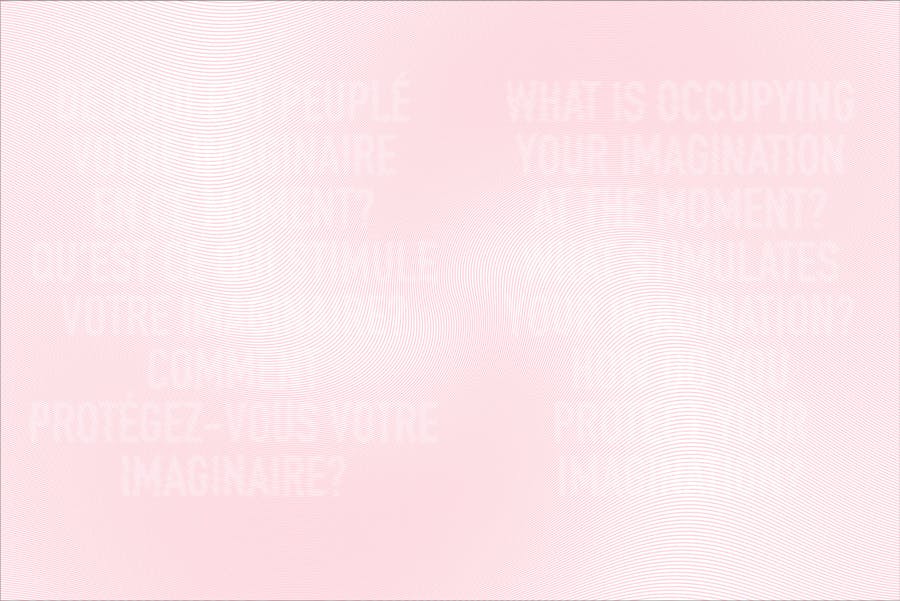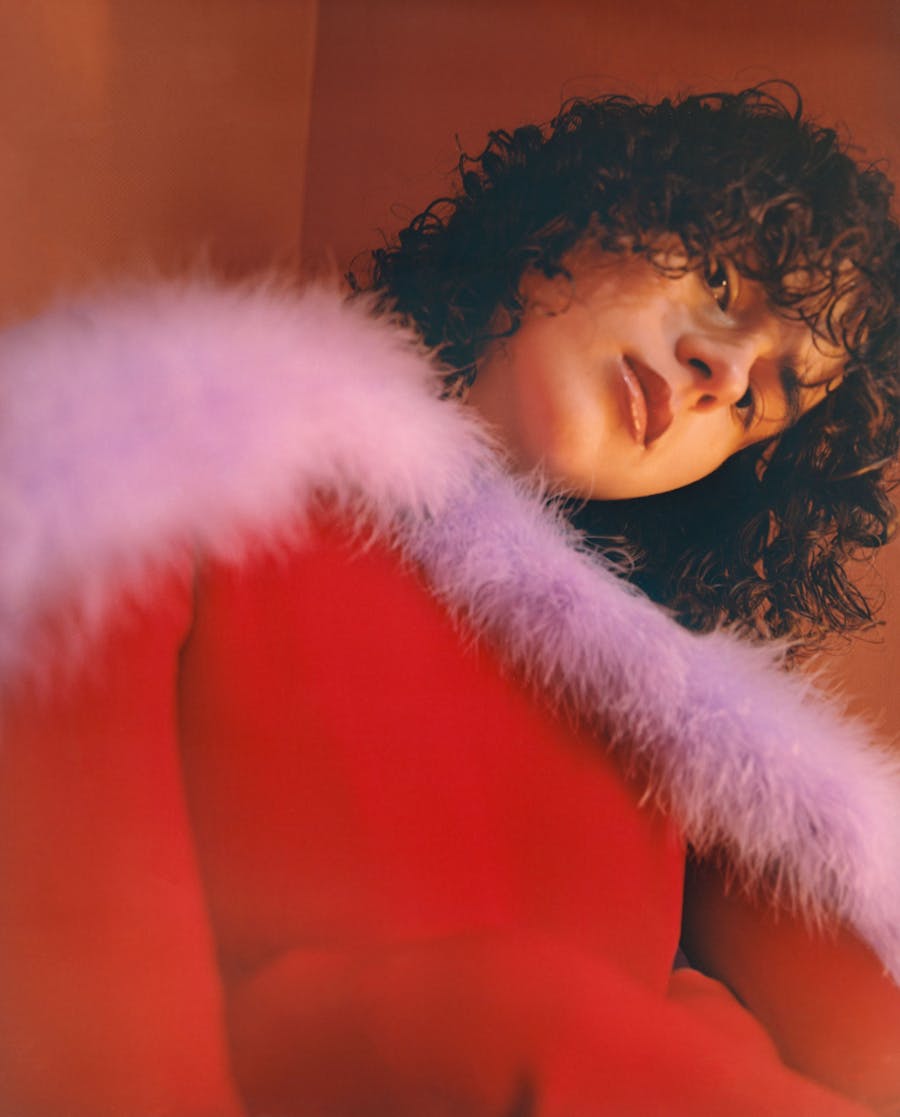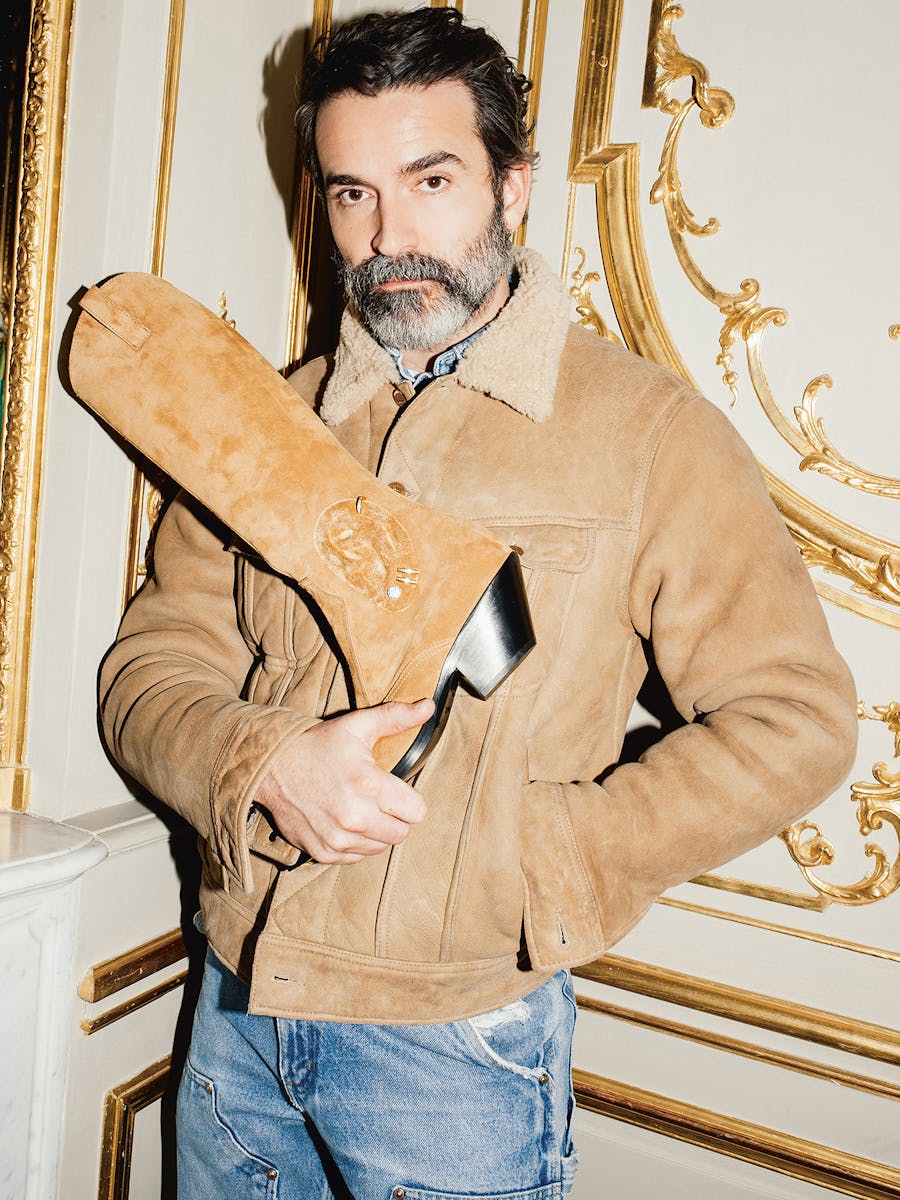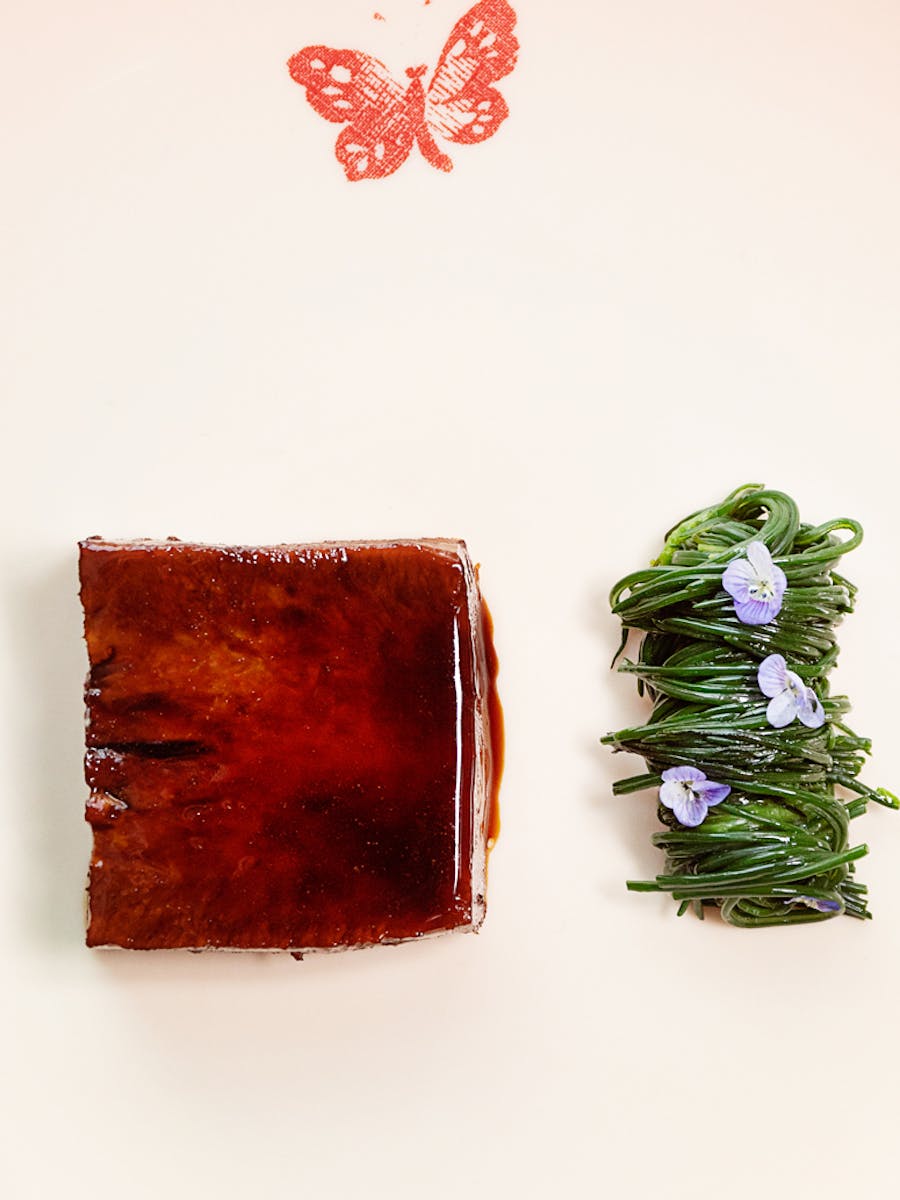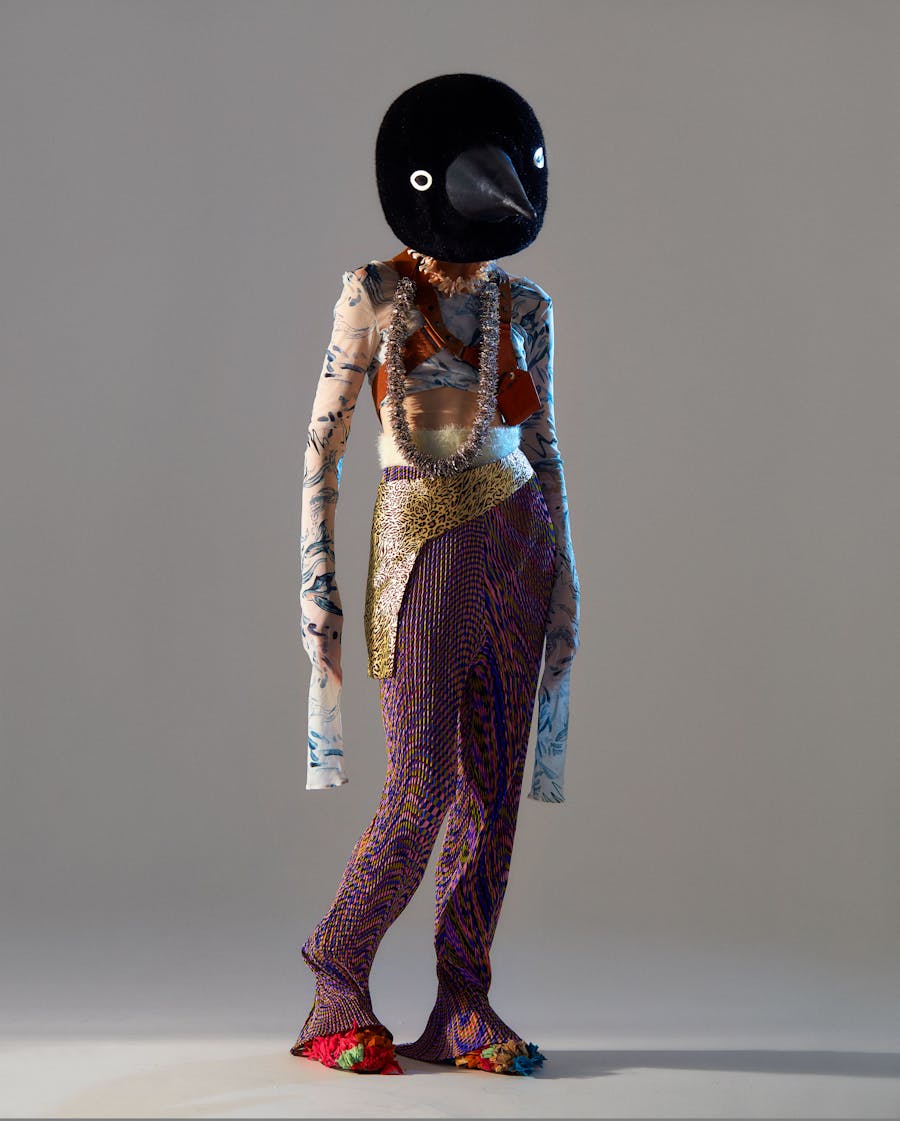Style is an idea, not a thing. Things are the stuff that’s taking up too much space in the closet. And while the rise and fall of these things depends on the fashion system, style is ultimately above and beyond that. In fact style is more like a virus. It’s in the air and contagious. If the recent pandemic has taught us anything, it’s that systems come and go, fortunes can be made and disappear with a simple shift in the atmosphere, but style is eternal. This shape-shifting chimera, occasionally caught in our butterfly nets, feeds on creativity, physical human contact and the desire for beauty. It’s high time for a new rendezvous.
⏤ Like a woman in a dress that’s grown too tight, style has been bursting at the seams of the fashion system for far too long. Luxury, drops, bricks-and-mortar stores, glossy media, influencers, must haves, fast chains, fashion weeks, fashion shows, capitals of style, seasons, the DNA of the brand, iconic pieces, delivery dates, collections and gender are, on their own, nothing more than a yawn-inducing pile of merch.
⏤ Alessandro Michele of Gucci and Saint Laurent’s Anthony Vaccarello resolved the show question early on last spring. The right time for a fashion show is when the designer has something to say and the audience is sufficiently intrigued to attend. Everything else is a mere bookmark.
⏤ In the meantime, elements of style are floating around to tantalize us. During the lockdown, images of Harry Styles from a February rehearsal wearing a JW Anderson SS20 patchwork cardigan on TikTok launched a slew of D.I.Y. knitters to make their own versions. When he found out, Anderson responded by offering the pattern free of charge to one and all. To be viable today, fashion and by extension luxury, will need to be more generous, attentive and socially aware than it has ever been before.
⏤ A new designer might take wing in a barn in Belgium like Meryll Rogge. Perhaps the best way to launch an Hermès bag is at the cinema with a Nouvelle Vague film about a boy and a girl in love. A troupe of dancers bouncing off the walls of a romantic old villa in Biarritz is a mid-summer night’s dream for Polo Ralph Lauren to say from the wings: ‘having a wonderful time, wish you were here.’ What more does an under-the-radar design duo need than Chloë Sevigny talking about how much she loves wearing your clothes. And not because she’s paid to do it! Can Lutz Huelle showing how to cut and twist old T-shirts into something new inspire you to take out the scissors? How about letting the model film herself? Or turning a chain bracelet into a cigarette holder? And, finally, can word-of-mouth alone create a following for a collection sold one design at a time? The answers to all these questions and more are “blowin in the wind” as Bob Dylan would say.
⏤ Here, a few style innovators, explain how they’re moving forward fueled by inspiration, adrenaline and desire.
Alban Adam
Changing perception
Hopscotching from Diesel communication to Thierry Mugler where he worked with Nicola Formichetti to Balenciaga online strategy and currently in show and marketing management for 1017 Alyx 9SM (designed by Mathew Williams, Givenchy’s new Creative Director), Alban Adam has immersed himself in the art of getting people and fashion together. Although he doesn’t think fashion and commerce should stand apart “like two ivory towers”, Adam believes successful communication is not really about money either. “When we started Balenciaga’s Instagram with Demna Gvasalia we worked exclusively with cool kids, most of them had less than 1000 followers and they photographed the clothes on themselves. It didn’t look corporate. There were no captions, no tagging, or links, no show or campaign pictures, but everything was available for sale. Despite Alyx’s tight budget, its past two Paris shows which traded up from an abandoned garage to the sleek atrium of a major bank, have been vital in transforming its image. “Paris really brought out all the sophisticated, technical, urban side of Alyx beyond what everybody already knew about it being loved by rappers”, says Adam. In line with this are Alyx’s Preparation editions, art directed by London’s OK-RM, a sleek limited edition available online that’s more of an aesthetic manifesto than a look book with “lots of photography, but not a lot of clothes. Super clean, a bit cold and very focused on the product.”
Lutz Huelle
Sharing
Lutz Huelle who began at Maison Margiela, has built his eponymous brand slowly but surely with his partner David Ballu and it now sells to an amazing 50 stores worldwide. Neither new, nor big, it is in the enviable category of rare small, labels that manage to do things their way and thrive. “It was such a weird position to be on my own", says Huelle of the lockdown. “I’m always busy and I always have people around me. Suddenly there was all this time. I took to the sofa where I read a book on Chanel, a book on Saint Laurent and the Millenium trilogy. After getting a subscription to the New Yorker I knew I had to do something. ”Following a series of Instagram Lives where he spoke about the situation in general, Huelle felt it was time to be generous.
“Fashion is so much about generosity anyway, it’s about giving something to people to help them feel better about themselves. ”The idea occurred to him: “what are we going to do if there is nothing left?” Realizing that everyone was at home lounging in T-shirts and that we all have loads of them lying around, he began a series of Instagram tutorials with a mannequin to show how to cut and sew, twist and fold old T-shirts into new pieces. “I was amazed how many people reacted to this. It was a DIY moment like punk and for once I wasn’t pushing something out there. Fashion isn’t always about getting people to buy things. It’s also about creating a community and having joint experiences. You might not be able to connect with the entire world, but as long as you reach the people who like what you do there’s a way forward.”
Réuni
Direct
Réuni means reunited in French and what partners Adrien Garcia, his brother Julien and his fiancé Alice set out to do is combine all the best practices in fashion to create a small, bullet-proof brand. Little did they know when they launched last November, after a successful crowdfunding campaign on the Ulule platform, how well prepared they were.
While all around them, brands were coming to a halt, Réuni produced its first product, a big lambswool sweater they called “Le Gros Pull d’Hiver” in four colors made in Spain with a design deliberated, point-by-point via a community questionnaire, in an edition of 750, all pre-ordered over two weeks on Instagram and delivered within three or four months. Next up is the poplin shirt with the same rigorous attention to quality and a pre-order completed in early June for 1179 shirts. A cardigan and a coat will follow. For the shirt, 20 poplins were subjected to 10 machine washings and dryings to select the most resilient, and a European factory was narrowed down from a test of three.
⏤ Garcia continues to do his homework for Réuni. His podcast “Entreprendre dans la Mode” includes interviews with 150 key players, people like Marie-France Cohen, founder of Bonpoint, Merci and Démodé, Ditte and Nicolaj Reffstrup the creative director and founder of Denmark’s Ganni and Violine Gressier, the French Global Industry Manager of luxury and beauty for Facebook and Instagram about what works and what doesn’t.
After design jobs at Balenciaga, and Louis Vuitton, with his partner Alice who put in time at Céline, the desire to create a brand was irresistible. “What characterizes Réuni today is that it’s direct-to-consumer. Because we’re DNVB (a digitally native vertical brand) we can afford to produce a high quality product that isn’t cheap (Réuni’s poplin shirt is 117 € with 5 € donated to La Maison des Femmes) but is still eight to ten times less expensive than a similar piece from a big house.” Réuni’s clients are the stars of the brand. Sustainability reaches into every corner of the company including packaging and the community dialogue is nonstop.
La Fétiche
Insiders
There’s nothing fashion likes better than insider information. When Chloë Sevigny was about to give birth during the lockdown, she did a photo shoot and interview for New York Magazine’s The Cut. In the shoot, Chloë wore a polkadot shirt from La Fétiche which she mentioned is one of her favorite brands. In the current sea of Instagram endorsements, there’s nothing as rare as a free opinion. The fact that very few people know about La Fétiche yet makes it even better.
La Fétiche puts traditional style in a new context. Instead of showing as a shirt, the brand’s patchwork bandana prints surprised in a quilted jacket, and the lining for a classic tweed blazer.
Launched in 2017 by two longtime Sonia Rykiel designers April Crichton and Orély Forestier, La Fétiche is assembled between Paris and Glasgow, Scotland. “The pressure to do so many collections with so little time really sapped our creative energy,” says Crichton. “We always felt there was another way.” That turned out to be working on their own directly with factories, about half of them in Scotland. “We’re lucky enough to have a great artistic community here, so now we just follow our instincts and make things happen from meeting delivery dates to finding hand knitters, a beautiful coat-maker or someone who produces the best silk. “La Fétiche might produce as few as five styles one season. Their best client is London’s Matches, but over the years, they have built up their friends and family community through Instagram and a loyal network of small stores ‘who really get what we’re doing.’” What they’re doing is for the long haul. “We want to make pieces you fall in love with and invest in. We don’t follow trends and it’s not a seasonal thing, not is it really a collection. It’s graphic and layered and the important thing is we’re excited about every, individual piece. If there’s a jacket we love, we keep doing it. There are clothes in my wardrobe that I’ve worn for the past 15 or 20 years,” says Crichton. “They’re like old friends I will always enjoy. ”
Meryll Rogge
From the Barn
Meryll Rogge has already designed for two of her favorite designers, Dries Van Noten and Marc Jacobs. The Belgian who studied fashion at the Royal Academy in Antwerp really had no reason to leave the comfortable world of the well paid in-house pro, it’s just that after 12 years she didn’t want to be locked up in an office anymore. Now she finds herself in the family barn near Ghent where she launched her namesake label in February and sold to 19 stores. Lockdown came right after Rogge’s Paris showroom so she renamed it Lounge instead of Fall/Winter and negotiated to deliver in October instead of July. In fact, she’s been adapting from the start. Her entire team is freelance, from embroiderers to patternmakers. “If you’re in an office all day, you’re on Pinterest and Tumblr with your nose stuck in a book. I think it’s more inspiring to work with people who are out in the world,” she says.
The collection, entirely made in France, Italy and Spain with embroidery from India, is a balancing act between design leaps of fancy and longevity. Early 80s glam, inspired by Whit Stillman’s 1998 film “The Last Days of Disco” shows in Rogge’s electric rose print from an Hermès owned textile mill in Lyon and her “glove boa,” a red duchess satin stole and glove combo. But there are also rustic wool cardigans lined in cashmere, a slinky LBD with pearl and chain straps and a coat made from slivers of vintage fur assembled in a limited edition by a retired Chanel artisan. “My aim is to deliver a very beautifully made garment, in beautiful fabric that can stay in the closet for a long time. But that doesn’t mean it’s classic. I like contrasts and unexpected combinations. A design can be out there, but there also has to be a grounded aesthetic to it, so that in 15 years, you’d still want to wear it. ”
Stéphanie D’heygere
Ready Mades
Stéphanie D’heygere’s canister hoops are a modern classic, a sleek flower vase for the ears with echoes of Marcel Duchamp, her favorite Marcel Broodthaers, or Maison Margiela where she cut her teeth as a jewelry designer. D’heygere launched her brand in 2018 “as a challenge” and now she sees it as her most important activity with a style set somewhere between the eye-popping pieces she designs for Glenn Martens’ Y/Project and the more classic jewelry she does for A.P.C.
“Obviously I want to create timeless pieces, but buyers always want new things. I don’t think much about seasons and I would never start with a theme. I also don’t think collections need to be so big anymore. It’s wasteful. I’d rather ask myself: ‘is this really innovative?’ or ‘who wants to buy this?’ and come up with less rather than more.”
In any case, nothing D’heygere designs looks like fashion. Her jeans bag styled like 5-pocket denim is so good it looks like it just happened. “I’m inspired by art, looking at things and seeing how they could be used in other ways à la Duchamp,” she says. “I always work on several concepts, that just keep coming back. For example there’s always a new version of an archetype like pearls and I always have ready mades like a lighter belt or shoehorn earrings. ”
Yoann et Marco
Fun
Communications agency Yoann et Marco is just a year old, born with its feet in digital. Marco Maestri who heads the agency, created it with his brother French rugbyman Yoann Maestri and Jacquemus was their first client. Maestri doesn’t have much to say about Jacquemus and why should he when the brand’s online presence speaks loudly and clearly for itself, making communication feel like a party to which one has personally been invited.
During the lockdown there was “Jacquemus at Home” with Bella Hadid filming herself captured by photographer Pierre Ange Carlotti. There were send-ins from fans with shoe ideas: imagine ripe oranges as heels, or two croissants as a bikini top? Mini films on the terrace of Jacquemus’ HQ looked like the best fête in town and his shoot featuring his grandmother Liline was sublime. In June, Jacquemus launched its first GIFs, a selection of cartoon dancing dresses, mini J bags and lemon earrings.
“The biggest change in the relationship between brands and the public is that, thanks to social media, the public has become actors. The fact that any of us can like or comment on a publication gives power to everyone. It’s essential today to have your community participate in what you do, ”says Maestri. So far Yoann et Marco’s communication stands out with intimate, humorous and less high gloss imagery without the usual intimidation, treating clients like friends. A series of childlike drawings by Marie Baudet for Carven look more like a children’s storybook than high fashion, live casts bring an Instagram audience inside and behind the scenes of a cultural platform like Villa Noailles, and the staff and customers playing with designer bags like toys at Galeries Lafayette Champs Elysées shake up the sleek image of luxury.
Leo Walk
Be Here Now
“Nothing can replace physical space. During the confinement, I turned my phone off. I couldn’t watch the lives, visiting an art exhibition on a screen makes no sense to me,” says dancer Léo Walk. Walk’s “Bleu Precieux” performance this summer with his troupe La Marche Bleue at Villa Magnan in Biarritz included elements from his “Première Ride” show which he will take on tour in 2021. Walk has been crossing genres since he was eleven or twelve when he danced hip hop to the Rolling Stones. The fact that Polo Ralph Lauren sponsored the avant première quietly like an angel in the wings hints at a new relationship between brands and artistic talent; less marketing more feeling. Walk’s relationship with Polo is collaborative. As an egerie for the brand, he has his say in the choice of photographer and styling. “I think it works because my troupe represents a cultural and artistic shift. We’re all dancers, but everybody does something else. Enfant Précoce is an artist, Pierre is a poet. We’re not models, but we have character.”
